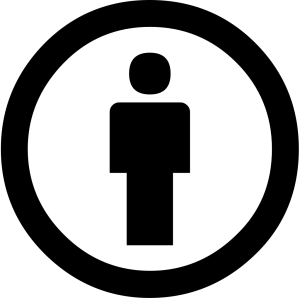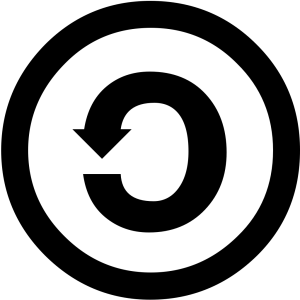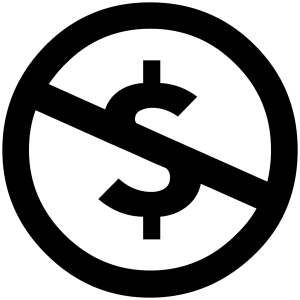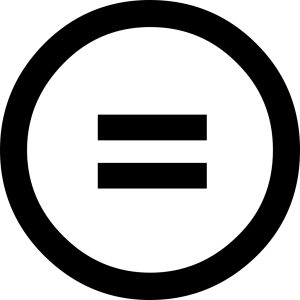Preparing the Soil: Getting Started with OER for Social Justice
Understanding Copyright and Open Licenses
Karna Younger
By the end of this chapter, you will be able to
- Define copyright
- Define public domain
- Define open licensing
- Identify Creative Commons license types
In your introduction to OER, you learned a foundational definition of OER, David Wiley’s 5 R definition of OER. OER “describe any copyrightable work (traditionally excluding software, which is described by other terms like ‘open source’) that is either (1) in the public domain or (2) licensed in a manner that provides everyone with free and perpetual permission to engage in the 5R activities,” according to Wiley. In other words, the 5 R activities (retain, revise, remix, reuse, and redistribute) are possible because use of the material is not limited by U.S. copyright law. In this chapter, we will give you a quick rundown of complicated copyright topics, pointing you to sources for a deeper dive.
U.S. Copyright
Definition of U.S. Copyright
United States copyright law is designed to protect creators’ intellectual (and financial) rights over their creative works and the rights of people to consume such creative works. From film to scholarly articles, creative works are protected under the U.S. Copyright Office once “original works of authorship [are] fixed in any tangible medium of expression, now known or later developed, from which they can be perceived, reproduced, or otherwise communicated, either directly or with the aid of a machine or device.” In other words, a highly creative work that we can perceive using one or more of our senses is likely copyrightable.
U.S. Copyright Office, Section 102.
Copyrights
U.S. Copyright Office, Section 106. Exclusive rights in copyrighted works, “Chapter 1: Subject Matter and Scope of Copyright,” in Copyright Law of the United States (Title 17).
Term of U.S. Copyright
As scholars, you produce copyrighted material as part of your profession. Many higher education institutions allow faculty and students to retain their copyrights. Generally, the term of copyright for works published after January 1, 1978, lasts the lifetime of the author plus an additional 70 years. If your creation is a work for hire, that is your employer retains the copyright, or published anonymously or pseudonymously, then the copyright of a work is for 95 years from the first publication or 120 years from its creation, whichever is the shortest term. Of course, the duration of copyright can be complex. Luckily, the U.S. Copyright Office has a detailed pamphlet.
Public Domain

During the country’s infancy, copyright was limited to 14 years because the U.S. government desired to foster a free and creative marketplace of ideas in which creators could build upon each other’s intellectual work. Thanks to lobbying to extend copyright terms from The Walt Disney Company , though, this free market place, known as the public domain, is a bit smaller than originally conceived.
The public domain is a term for creative works that cannot be copyrighted or are not copyrighted. That is, works that you can use however you want because they have no restrictive copyrights. A work may enter the public domain in the following ways. First, a creator may have intentionally dedicated their work to the public domain by publishing their work with the public domain symbol (pictured on the left). Second, their work may never have been eligible for current copyright, or the copyright expired. Also, taxpayer-funded work of most government workers is in the public domain, so we can all enjoy NASA’s images of space. Finally, a creator’s 70-year minimum copyright term may have expired.
Every January 1 in the United States is Public Domain Day, marking the release of works, such as Walt Disney’s Steamboat Willie (1928), for free public use. That is, in 2024 works published in 1928 entered the public domain, and in 2025 works published in 1927 will follow.
Public Domain Resources
- Check out new public domain releases every January 1
- Read Rich Stim’s overview of the public domain
- Get technical with the U.S. Copyright Office’s Circular 15A: Duration of Copyright
- Learn more about the public domain mark from Creative Commons
Public Domain Knowledge Check
Open licensing
We think of open licenses as a way to create a type of third space along the spectrum of copyright and the public domain. As you know, to use someone’s copyrighted material, you must obtain permission, also known as obtaining a “license” for specific use, according to Rich Stim, a copyright attorney. Open licenses are a way for you to help people immediately know how they can use your creative works. In other words, you can retain your copyrights and foster individual and collective creativity and intellectual growth. That’s what we call a win-win.
Creative Commons Licenses
Creative Commons (CC) licenses are the most commonly used open license in the open education movement because the CC organization is deeply committed to making education more affordable and accessible. Applying a CC license to your work allows you to communicate the retention of your copyrights across a spectrum, from copyright’s all rights reserved to placing your work in the public domain.
In addition to their CC branded icon, CC Licenses essentially offer four licensing terms that can be combined into six types of licenses. Let’s take a closer look at the different components.

Attribution (BY) |
By (BY) typically after CC, requires creator must be credited when the work is cited, remixed, or otherwise used. | 
Share alike (SA) |
Share alike (SA), requires all derivatives or remixes of the work be licensed under the same terms. For example, remixes of a CC BY-SA work must also be CC BY-SA. |

Noncommercial (NC) |
Noncommercial (NC) restricts users from using the work for commercial purposes. Authors often use this to protect their right to financially profit from their publication. | 
No derivatives (ND) |
No derivatives (ND) prevents users from modifying or remixing the work. This does not prevent you from properly citing or critically engaging with the creation, though. |
Using Creative Commons (CC) as your base term, you can add and combine attribution (BY), share alike (SA), noncommercial (NC), and no derivatives (ND) to express permissions to consumers of your work. The one exception is that because ND does not allow remixing, it is not compatible with share alike. That is, there is no need to apply a share alike stipulation for remixed versions of a work if remixing is not permitted.
CC Badges
The four licensing terms are combined in a variety of ways attribute an open license. Attributions are noted with a written notice and/or a CC badge. Look for CC licenses in the front matter of a Pressbook, in a website footer, or immediately next to an item, such as a photo caption.
Let’s review the different badges, their terms of use, and their implications for OER, specifically Wiley’s 5 Rs of OER.
CC Badges Knowledge Check
More Open Licenses
We focus on CC licenses in this text because it is the dominant open license used in open education. From open software licenses to copyleft licenses, there are alternatives that may be better.
For example, Traditional Knowledge Labels are designed for the nuances of sharing within and beyond Indigenous communities, better protecting and promoting Indigenous sovereignty over Indigenous knowledge.
Recap and Check
U.S. copyright law and licensing are complicated. We are not attorneys but we can provide you with tools and some guidance to navigate this complicated field. Below you can review our workshop material to summarize topics covered in this chapter. Once you begin remixing OER and developing your own work, we will revisit more advanced components of copyright and open licenses.
Recap
Resources
Creative Commons,(2019). “Downloads”
Creative Commons,(2019). “About CC Licenses.” CC BY 4.0.
Creative Commons,(2019). Creative Commons for Educators and Librarians. CC BY 4.0.
Creative Commons, (2019). “Frequently Asked Questions.” CC BY 4.0.
Levin, S. (2021). “Are Recipes and Cookbooks Protected by Copyright?,” Copyright Alliance.
U.S. Copyright Office, Section 104: Subject Matter of Copyright: National Origin, “Chapter 1: Subject Matter and Scope of Copyright,” in Copyright Law of the United States (Title 17).
U.S. Copyright Office, Section 106. Exlusive rights in copyrighted works, “Chapter 1: Subject Matter and Scope of Copyright,” in Copyright Law of the United States (Title 17).
Wiley, D. (2024). “Defining the ‘Open’ in Open Content and Open Educational Resources,” improving learning. CC BY 4.0.
“Basics in Copyright and Open Licensing” by Karna Younger is licensed under CC BY 4.0.
